Top 250 Movies Like Working For The Enemy: Forced Labour In The Third Reich
A list of the best movies similar to Working for the Enemy: Forced Labour in the Third Reich. If you liked Working for the Enemy: Forced Labour in the Third Reich then you may also like: Zone Troopers, Walking with the Enemy, Naked Among Wolves, Night Train to Munich, None Shall Escape and many more great movies featured on this list.
In the name of Hitler, more than 13 million Europeans – in many cases mere children – were taken from their homes and forced to work for the enemy, Nazi Germany. This phenomenon was not confined to concentration camps: there was no German town, no German village that did not have forced labourers. From numerous international perspectives, this series traces the story of both, the victims and the perpetrators.
Walking with the Enemy
Regent Horthy is the leader of Hungary and a German ally, but his favorable standing with Hitler changes as the war comes to an end. Forced to cede Hungary’s power or else witness the execution of his son, Regent Horthy gives up control of his country to the Nazis, who quickly move Hungarians to ghettos and death camps, with no hope in sight. But the despair changes when a young man named Elek emerges. Separated from his family during the relocations and aided by the woman he loves , Elek defies the enemy by becoming one of them. In a race against time, disguised as a Nazi Officer he embarks on a mission to save his family and thousands of his countrymen.
Naked Among Wolves
Taking place at the Concentration camp Buchenwald at the end of March 1945, prisoner Hans Pippig discovers in a carrying case of an incoming prisoner a Jewish child. If reported the three-year-old is sure to die. On the other hand, a violation of the rules of the camp would threaten the long prepared uprising of the concentration camp prisoners against the SS.
Night Train to Munich
Czechoslovakia, March 1939, on the eve of World War II. As the German invaders occupy Prague, inventor Axel Bomasch manages to flee and reach England; but those who need to put his knowledge at the service of the Nazi war machine, in order to carry out their evil plans of destruction, will stop at nothing to capture him.
Odette
The film is based on the true story of Special Operations Executive French-born agent Odette Sansom, who was captured by the Germans in 1943, condemned to death and sent to Ravensbrück concentration camp to be executed. However, against all odds she survived the war and testified against the prison guards at the Hamburg Ravensbrück Trials. She was awarded the George Cross in 1946; the first woman ever to receive the award, and the only woman who has been awarded it while still alive. (From Wikipedia, licensed under CC-BY-SA)
The Round Up
A faithful retelling of the 1942 "Vel' d'Hiv Roundup" and the events surrounding it.
Anne Frank Remembered
Using previously unreleased archival material in addition to contemporary interviews, this academy award-winning documentary tells the story of the Frank family and presents the first fully-rounded portrait of their brash and free-spirited daughter Anne, perhaps the world's most famous victim of the Holocaust. Written by Dawn M. Barclift
Arch of Triumph
In the winter of 1938, Paris is crowded with refugees from the Nazis, who live in the black shadows of night, trying to evade deportation. One such is Dr. Ravic, who practices medicine illegally and stalks his old Nazi enemy Haake with murder in mind. One rainy night, Ravic meets Joan Madou, a kept woman cast adrift by her lover's sudden death. Against Ravic's better judgment, they become involved in a doomed affair.
Bent
Max is a handsome young man who, after a fateful tryst with a German soldier, is forced to run for his life. Eventually Max is placed in a concentration camp where he pretends to be Jewish because in the eyes of the Nazis, gays are the lowest form of human being. But it takes a relationship with an openly gay prisoner to teach Max that without the love of another, life is not worth living.
Black Fox: The Rise and Fall of Adolf Hitler
The rise and fall of Nazi Germany in part through the use of classical allegory.
The Boy in the Striped Pyjamas
When his family moves from their home in Berlin to a strange new house in Poland, young Bruno befriends Shmuel, a boy who lives on the other side of the fence where everyone seems to be wearing striped pajamas. Unaware of Shmuel's fate as a Jewish prisoner or the role his own Nazi father plays in his imprisonment, Bruno embarks on a dangerous journey inside the camp's walls.
Camp 14: Total Control Zone
Shin Dong-Huyk was born on November 19, 1983 as a political prisoner in a North Korean re-education camp. He was a child of two prisoners who had been married by order of the wardens. He spent his entire childhood and youth in Camp 14, in fact a death camp. He was forced to labor since he was six years old and suffered from hunger, beatings and torture, always at the mercy of the wardens. He knew nothing about the world outside the barbed-wire fences. At the age of 23, with the help of an older prisoner, he managed to escape. For months he traveled through North Korea and China and finally to South Korea, where he encountered a world completely strange to him.
The Captive Heart
A series of stories about the lives and loves of nine men in a Prisoner of War Camp over five years. Location shooting in the British occupied part of Germany adds believability. The main story is of Hasek (Redgrave) a Czech soldier who needs to keep his identity a secret from the Nazis, to do this he poses as a dead English Officer and corresponds with the man's wife. Upon liberation they meet and decide to continue their lives together. The other inmates' stories are revealed episodically.
Charlotte
The true story of Charlotte Salomon, a young German-Jewish painter who comes of age in Berlin on the eve of the Second World War. Fiercely imaginative and deeply gifted, she dreams of becoming an artist. Her first love applauds her talent, which emboldens her resolve. When anti-Semitic policies inspire violent mobs, she escapes to the safety of the South of France. There she begins to paint again, and finds new love. But her work is interrupted, this time by a family tragedy that reveals an even darker secret. Believing that only an extraordinary act will save her, she embarks on the monumental adventure of painting her life story.
The Colditz Story
Allied prisoners of various nationalities pool their resources to plan numerous escapes from an "escape-proof" German P.O.W. camp housed in a Medieval castle.
Schindler's List
The true story of how businessman Oskar Schindler saved over a thousand Jewish lives from the Nazis while they worked as slaves in his factory during World War II.
The Counterfeiters
The story of Jewish counterfeiter Salomon Sorowitsch, who was coerced into assisting the Nazi operation of the Sachsenhausen concentration camp during World War II.
The Diary of Anne Frank
The true, harrowing story of a young Jewish girl who, with her family and their friends, is forced into hiding in an attic in Nazi-occupied Amsterdam.
The Grey Zone
A Nazi doctor—along with the Sonderkomando, Jews who are forced to work in the crematoria of Auschwitz against their fellow Jews—find themselves in a moral grey zone.
Jojo Rabbit
A World War II satire that follows a lonely German boy whose world view is turned upside down when he discovers his single mother is hiding a young Jewish girl in their attic. Aided only by his idiotic imaginary friend, Adolf Hitler, Jojo must confront his blind nationalism.
The Zone of Interest
The commandant of Auschwitz, Rudolf Höss, and his wife Hedwig, strive to build a dream life for their family in a house and garden next to the camp.
Sophie's Choice
Stingo, a young writer, moves to Brooklyn in 1947 to begin work on his first novel. As he becomes friendly with Sophie and her lover Nathan, he learns that she is a Holocaust survivor. Flashbacks reveal her harrowing story, from pre-war prosperity to Auschwitz. In the present, Sophie and Nathan's relationship increasingly unravels as Stingo grows closer to Sophie and Nathan's fragile mental state becomes ever more apparent.
Persian Lessons
Occupied France, 1942. Gilles is arrested by SS soldiers alongside other Jews and sent to a camp in Germany. He narrowly avoids sudden execution by swearing to the guards that he is not Jewish, but Persian. This lie temporarily saves him, but Gilles gets assigned a life-or-death mission: to teach Farsi to Head of Camp Koch, who dreams of opening a restaurant in Iran once the war is over. Through an ingenious trick, Gilles manages to survive by inventing words of "Farsi" every day and teaching them to Koch.
The Diary of Anne Frank
The story of a 13-year-old Jewish girl and her family who are forced into hiding by the Nazis during World War II.
Escape from Sobibor
The true story of WWII's notorious Sobibor Nazi death camp, where a courageous inmate orchestrates and leads the escape of over 300 prisoners.
Fateless
An Hungarian youth comes of age at Buchenwald during World War II. György Köves is 14, the son of a merchant who's sent to a forced labor camp. After his father's departure, György gets a job at a brickyard; his bus is stopped and its Jewish occupants sent to camps. There, György find camaraderie, suffering, cruelty, illness, and death. He hears advice on preserving one's dignity and self-esteem. He discovers hatred. If he does survive and returns to Budapest, what will he find? What is natural; what is it to be a Jew? Sepia, black and white, and color alternate to shade the mood.
Germany Pale Mother
Germany 1939. Hans and Lene marry the day before the war breaks out, and Hans is sent to the Eastern front. During a bombing raid their daughter Anna is born. The house is destroyed and Lene and Anna moves in with relatives in Berlin. Hans survives the war but he is not the same person as in 1939, and he and Lene find it difficult to live together again.
13 Minutes
The breathtaking story of a man who nearly would have changed the world. In 1939, when Hitler tricked millions of people at the height of his power, radical Georg Elser — disparaged as an assassin — is one of the greatest resistance fighters.
Werewolf
Summer of 1945. A temporary orphanage is established in an abandoned palace surrounded by forests for the eight children liberated from the Gross-Rosen camp. Hanka, also a former inmate, becomes their guardian. After the atrocities of the camp, the protagonists slowly begin to regain what is left of their childhood but the horror returns quickly. Camp Alsatians roam the forests around. Released by the SS earlier on, they have gone feral and are starving. Looking for food they besiege the palace. The children are terrified and their camp survival instinct is triggered.
Hitler - Beast of Berlin
Hans Memling, a young intellectual, patriotic German, is secretly opposed to the Nazi regime. With the aid of Gustav Schultz, Father Pommer, Anna Wahl and others, he is gleaning accurate information from foreign radio broadcasts and distributing it through Germany with an underground-press operation. He convinces his brother-in-law Karl Bach, the brother of his wife Elsa, that Hitler is leading Germany toward a second world war. Karl, in love with Anna, joins the movement, determined to restore German culture and save the people from the brutality of the Storm Troopers and the Gestapo. The group has an inside link through Albert Stalhelm, a Storm Trooper and one of Hitler's Elite Guards. Albert is sickened by the brutalities he sees and wants to resign and flee Germany, but Hans persuades him to remain until they can find a replacement. He agrees, but warns the group that he is forced to join in the Nazi orgies and liquor loosens his tongue...
Inside Out
An American ex-WW II POW returns to Germany 30 years after the war. He teams up with the former commander of his prison camp. Together they spring a Nazi war criminal from jail. He's the only one left who knows where a secret wartime cache of gold is hidden.
The Last Butterfly
Stage mime Antoine Moreau is compelled by the Gestapo to put on a performance for the children of Terezin, a "model" concentration camp, to convince the Red Cross observers that the camp is truly what it seems. Reluctant at first, Moreau slowly learns the true nature of the camp, including the meaning of the "transports" on which people leave. With a world-class orchestra (made up of people interned in the camp) and a cast of children, Moreau stages a show to end all shows.
Look Who's Back
When Adolf Hitler reawakens at the site of his former bunker in present-day Berlin, he is mistaken for a comedian and quickly becomes a media phenomenon.
Morituri
As the end of the Second World War approaches and the Soviet Red Army is advancing, a group of concentration camp inmates is helped to escape by a Polish doctor. They hide in a wood where they meet other fugitives, who have been there for months, constantly in fear of being discovered. Out of fear of the German army patrols, they do not dare to leave the forest, even as the food supplies run low.
The Mortal Storm
The Roth family leads a quiet life in a small village in the German Alps during the early 1930s. When the Nazis come to power, the family is divided and Martin Brietner, a family friend is caught up in the turmoil.
Paragraph 175
During the Nazi regime, there was widespread persecution of homosexual men, which started in 1871 with the Paragraph 175 of the German Penal Code. Thousands were murdered in concentration camps. This powerful and disturbing documentary, narrated by Rupert Everett, presents for the first time the largely untold testimonies of some of those who survived.
The Password Is Courage
Sergeant-Major Charles Coward, a brave British soldier is captured by German forces during World War II. When he's thrown into a prisoner of war camp, he immediately plans his escape. Masquerading as a wounded German soldier, he makes it as far as the medical tent, where the deceived enemy forces award him the Iron Cross. Though he is ultimately discovered, he goes on to courageously pursue his freedom with a whimsical and undying audacity.
Theresienstadt
Nazi propaganda film about the "Theresienstadt ghetto". The film was supposed to show the world that Jews didn't suffer in concentration camps. Upon completion, most Jews shown in the film (including director Kurt Gerron) were brought to Auschwitz, where they were killed.
Lili Marleen
The story of a German singer named Willie who while working in Switzerland falls in love with a Jewish composer named Robert whose family is helping people to flee from the Nazis. Robert’s family is skeptical of Willie, thinking she could be a Nazi as she becomes famous for singing the song “Lili Marleen”.
Finsterworld
The film tells different stories in a kind of parallel Germany about love, affection and hatred.
My Führer
Hitler no longer believes in himself, and can barely see himself as an equal to even his sheep dog. But to seize the helm of the war he would have to create one of his famous fiery speeches to mobilize the masses. Goebbels therefore brings a Jewish acting teacher Grünbaum and his family from the camps in order to train the leader in rhetoric. Grünbaum is torn, but starts Hitler in his therapy ...
The Last Days
Five Jewish Hungarians, now U.S. citizens, tell their stories: before March, 1944, when Nazis began to exterminate Hungarian Jews, months in concentration camps, and visiting childhood homes more than 50 years later. An historian, a Sonderkommando, a doctor who experimented on Auschwitz prisoners, and US soldiers who were part of the liberation in April, 1945.
The Murderers Are Among Us
After returning from a concentration camp, Susanne finds an ex-soldier living in her apartment. Together the two try to move past their experiences during WWII.
Three Faces West
Viennese surgeon Dr. Braun and his daughter Leni come to a small town in North Dakota as refugees from Hitler. When the winds of the Dust Bowl threaten the town, John Phillips leads the townsfolk in moving to greener pastures in Oregon. He falls for Leni, but she is betrothed to the man who helped her and her father escape from the Third Reich. She must decide between the two men.
2 or 3 Things I Know About Him
What would your family reminiscences about dad sound like if he had been an early supporter of Hitler’s, a leader of the notorious SA and the Third Reich’s minister in charge of Slovakia, including its Final Solution? Executed as a war criminal in 1947, Hanns Ludin left behind a grieving widow and six young children, the youngest of whom became a filmmaker. It's a fascinating, maddening, sometimes even humorous look at what the director calls "a typical German story." (Film Forum)
Where Hands Touch
Germany, 1944. Leyna, the 15-year old daughter of a white German mother and a black African father, meets Lutz, a compassionate member of the Hitler Youth whose father is a prominent Nazi soldier, and they form an unlikely connection in this quickly changing world.
The Origin of Violence
A French teacher makes a startling discovery while on a trip to Buchenwald.
Death in Love
Death in Love is a psychosexual-thriller about a love affair between a Jewish woman and a doctor overseeing human experimentation at a Nazi German concentration camp, and the impact this has on her sons' lives in the 1990s.
The Search
In postwar Germany, a displaced Czech boy, separated from his family during wartime, is befriended by an American GI while the boy's mother desperately searches for him.
In Enemy Country
Wartime secret agents are on a mission to destroy a deadly new type of torpedo, hidden in a Nazi stronghold in France.
Enemy of Women
Playwright Joseph Goebbels turns Nazi propagandist and loses his girlfriend to another man.
The Hiding Place
The Hiding Place is an account of a Dutch family who risk their lives by offering a safe haven for Jews during World War II
Genghis Cohn
In the midst of World War II, Nazi officer Otto Schatz declares the execution of Jewish music-hall comedian Genghis Cohn. Many years later, Otto is comfortably retired into the life of a highly respected police commissioner, and is investigating a series of murders when he encounters the ghost of Genghis Cohn. The haunting turns into a taunting, and before he knows it, Schatz is slowly driven mad as he is lured into a trap.
The Palmnicken Tragedy
Andrei Proskuryakov's documentary delves into a profound examination and contemplation of the events that transpired on January 31, 1945. On that day, the Nazis perpetrated a large-scale execution of approximately 3,000 prisoners from the Stutthof concentration camp on the shores of the Baltic Sea, near the village of Palmnicken in East Prussia. The film is meticulously structured around three pivotal individuals: Martin Bergau, a former Hitler Youth member who was connected to the tragedy; Gunther Nitsch, a German-American writer whose grandfather was involved in exhuming the victims» bodies; and Simcha Koplowicz, the son of Sheva Koplowicz, a survivor of the massacre. Through these characters, the documentary meticulously examines the historical silence that surrounded this tragedy and endeavors to reveal the unvarnished truth surrounding the event.
Hitler's SS : Portrait In Evil
The two-part TV movie Hitler's SS: Portrait in Evil crystallizes that evil by concentrating on two Berlin brothers. In 1931, Helmut Hoffman a brilliant student and self-styled opportunist, joins Hitler's SS. At the same time, his younger brother Karl, a top athlete and idealist, becomes a chauffeur for the "S.A.".
Death in the Bunker: The True Story of Hitler's Downfall
Adolf Hitler spent the last ten days of his life in a bunker underneath the Chancellery of the Reich. Unwilling to face the consequences of defeat, the dictator ended his own life on April 30, 1945 in this fortified underground complex. Featuring exclusive interviews with the last survivor’s of Hitler’s inner circle and extensive archival footage, Death in the Bunker is an illuminating look at the Führer’s final decisions in preparation for his suicide.
Hitler- Dead or Alive
A team of ex-con bounty hunters go to Germany in search of Hitler. If they can find him, a million dollar reward is to be paid to them.
The 3 Rooms of Melancholia
A searing examination of the unrelenting Chechen conflict, observed through the prisms of a Russian military boys academy, a war-torn town and a children's refugee camp.
Hitler's Madman
In 1942, a young paratrooper in the RAF returns to Czechoslovakia to encourage his fellow countrymen to sabotage the German war effort.
Shepherd: The Hero Dog
Follow the perilous journey to freedom when a young boy and his dog attempt to escape a concentration camp during World War II. Based on true events.
Life for Life: Maximilian Kolbe
The story of catholic saint Maximilian Kolbe (1894-1941), who volunteered to die in place of a stranger in the Nazi concentration camp of Auschwitz.
And the Violins Stopped Playing
This is the true story about a group of Romani's (gypsy) in occupied Poland during World War II as they confront the atrocities and tragedies of a forgotten holocaust.
Death Is My Trade
“Death is my Trade” centers on the life of Rudolph Höss, the commandant of Auschwitz II-Birkenau for the majority of its existence. The main character's name in the film is Franz Lang. This name change was deliberate to ensure that the character is not automatically viewed as being some sort of villain or demon. Franz is an average German kid growing up during World War I. The film follows Franz as he grows up and becomes a hard, efficient, organized worker who eventually joins the National Socialist party in Germany. Impressionable young Franz takes orders as one of the utmost points of honor and duty, so when he is eventually asked by Heinrich Himmler to become commandant of the largest extermination camp built during WWII he barely hesitates to consider how heavy such a burden will be.
Erna, Helmut and the Nazis
Germany, 1929. Helmut Machemer and Erna Schwalbe fall madly in love and marry in 1932. Everything indicates that a bright future awaits them; but then, in 1933, Adolf Hitler and the Nazi Party rise to power and their lives are suddenly put in danger because of Erna's Jewish ancestry.
My Best Enemy
Poland 1943: An unlikely pair - a concentration camp prisoner and a captain in Hitler's notorious SS - free themselves from the wreckage of a crashed SS airplane. The two appear to be strangely familiar with each other and the extent of their extraordinary relationship is thrillingly revealed.
Les Milles
In the beginning of the Second World War, Germans, Austrians and persons without nationality living in France are sent to the concentration camp of Les Milles by France government. Commander Charles Perrochon is the responsible for this camp and he promises to the leaders of the prisoners to protect them from the Nazis. When France is invaded by the Germans, Commander Perronchon will disobey orders and his superiors trying to save these men. He gets a train, a ship and money from USA to send about eight hundred of these prisoners to the safety of Casablanca, in Marrocos.
German Concentration Camps Factual Survey
On the 29th September 1945, the incomplete rough cut of a brilliant documentary about concentration camps was viewed at the MOI in London. For five months, Sidney Bernstein had led a small team – which included Stewart McAllister, Richard Crossman and Alfred Hitchcock – to complete the film from hours of shocking footage. Unfortunately, this ambitious Allied project to create a feature-length visual report that would damn the Nazi regime and shame the German people into acceptance of Allied occupation had missed its moment. Even in its incomplete form (available since 1984) the film was immensely powerful, generating an awed hush among audiences. But now, complete to six reels, this faithfully restored and definitive version produced by IWM, is being compared with Alain Resnais’ Night and Fog (1955).
1945: The Savage Peace
How, in 1945, after the end of World War II and the fall of the Nazi regime, the defeated were atrociously mistreated, especially those ethnic Germans who had lived peacefully for centuries in Germany's neighboring countries, such as Czechoslovakia and Poland. A heartbreaking story of revenge against innocent civilians, the story of acts as cruel as the Nazi occupation during the war years.
Nazi Titanic
During a bizarre chapter of WWII, Nazi propaganda minister Joseph Goebbels decided to make a movie based on the sinking of the Titanic. This epic film was so large in scale that the Nazis were forced to divert men, material and ships from the war effort in order to complete it. Titanic was filmed aboard cruise ship SS Cap Arcona in the Baltic Sea. The movie’s director Herbert Selpin was arrested by the Gestapo over comments he made about the ship’s crew and he was questioned by Goebbels. Selpin was found dead the next day in his cell. The Gestapo’s verdict was suicide. Titanic never received the impressive premiere that Goebbels intended, being first shown in Nazi-occupied Paris in 1943. We reveal this little known but fascinating story by looking at the making of the film, as well as the fate of the German ship Cap Arcona.
Death Camp Treblinka: Survivor Stories
The only two survivors of the Treblinka concentration camp recount the horrors they experienced and tell how their lives were after escaping during a revolt in 1943.
Hitler in Colour
Documentary using only original colour footage charts the 12 years from Adolf Hitler's rise to power to the fall of Berlin in 1945. Complemented by eyewitness material, tracks the dramatic transformation of Germany into a Nazi state, looks into Hitler's relationship with his lover Eva Braun and replicates pivotal events, including Nazi rallies, the invasion of Poland, Hitler's meeting with Lloyd George, the horrors of Buchenwald concentration camp, Warsaw's Jewish Ghetto, the Battle of Britain and the fall of Berlin.
St. Louis
Hamburg, Germany, 1939. Getting a passage aboard the passenger liner St. Louis seems to be the last hope of salvation for more than nine hundred German Jews who, desperate to escape the atrocious persecution to which they are subjected by the Nazi regime, intend to emigrate to Cuba.
Der Bund Deutscher Mädel
German League of Girls in the Hitler Youth movement. By age 10, all German girls were required to join the BDM. The BDM was the female organization under the Hitler Youth. At age 17 the girls could join the Belief and Beauty movement within the BDM. The primary focus of both movements was special training to become good wives mothers and homemakers. They learned cooking, sewing, child care . They learned all about Germany's leader Adolf Hitler and Nazism. My mother grew up in Nazi Germany and her stories about the BDM were very interesting. The children were not involved in the atrocities that occurred.
Ghetto Theresienstadt: Deception and Reality
A look at the Nazi "show camp" used to fool the world while they carried out their "Final Solution".
Goering's Catalogue
For more than a decade, Reichsmarschall Hermann Göring, Adolf Hitler's right-hand man during the infamous Third Reich, assembled a collection of thousands of works of art that were meticulously catalogued. Why did he steal entire collections, mainly those belonging to Jewish families, ultimately victims of the Shoah? Was it to satisfy his aesthetic ambitions and his insatiable personal greed or was he acting in the common interest of the Nazi rulers?
The Fatal Eleven
Football and Nazism is at the core of this powerful film that tells the true story of the ‘The Fatal Eleven’. In August 1942, a football game between forced Ukrainian labourers & the German Air Force took place with tragic consequences.
Jerry Building: Unholy Relics of Nazi Germany
Jonathan Meades explores the architecture of Nazi Germany, from its holiday camps to its concentration camps.
The Auschwitz Report
This is the true story of Freddy and Walter – two young Slovak Jews, who were deported to Auschwitz in 1942. On 10 April 1944, after meticulous planning, they manage to escape. While the inmates they had left behind courageously stand their ground against the Nazi officers, the two men are driven on by the hope that their evidence could save lives.
The Rose Garden
In Germany, an old man attacks another old man and is arrested. The attacker refuses to speak. A female lawyer is appointed to him. She discovers that the attacker has numbers tattooed on his arm and the attacked man was a German officer.
The Attic: The Hiding of Anne Frank
During the Nazi occupation of Amsterdam, Otto Frank decides to hide his family, who are Jewish, after his daughter Margot is called to appear for transport to a Nazi labour camp. Miep Gies, Otto Frank's office assistant hides them in the attic above the office. The film tells the true story of Gies' struggle to keep the family hidden and safe, as the Nazis turn Amsterdam upside-down. Based upon Gies' memoirs and Anne Frank's famous diary.
Hitler's Children
This lurid exposé of the Hitler Youth follows the woes of an American girl declared legally German by the Nazi government.
The 25th Hour
A Romanian peasant fights to get back to his family after he's imprisoned by the Nazis.The picture is based on real events. It includes Hungary's government in collaboration with the Nazis, the encroachment of Romania by Stalin's troopers, and other happenings.
The Anarchist's Wife
"The Anarchist's Wife" is the story of Manuela who is left behind when her husband Justo fights for his ideals against Franco's Nationalists during the Spanish Civil War. He is deported to a concentration camp, and upon his release, continues the fight against nationalism in the French resistance. Years, pass without a word from him, but his wife never gives up hope of seeing him again.
Calm at Sea
October 1941. Eighteen months into France’s occupation by German troops, young Communist members of the Resistance shoot dead an officer of the German Army. In retaliation, Hitler demands the deaths of 150 Frenchmen, as 'retribution'. The targets are to be mostly young men believed to share the assassins’ political convictions. Most of these men are taken from an internment camp for opponents of the occupation; a 35-year-old French rural administrator is ordered to select the victims. Although the parish priest appeals to their conscience and moral sensibilities, both the German military and their French helpers slavishly follow their orders.
Pastor Hall
This film is based on the true story of Pastor Martin Neimuller, who was sent to Dachau concentration camp for criticising the Nazi party. The small German village of Altdorf in the 1930's has to come to terms with Chancellor Hitler and the arrival of a platoon of Stormtroopers (preceded by a flock of sheep). The Stormtrooper go about teaching and enforcing 'The New Order' but Pastor Hall is a kind and gentle man who won't be cowed. Some villagers join the Nazi party avidly, some just go along with things, hoping for a quiet life but Pastor Hall takes his convictions to the pulpit.
Hasenjagd - Vor lauter Feigheit gibt es kein Erbarmen
This film is based on the actual events referred to as the "Mühlviertler Hasenjagd" (Hare-hunt in the Mühlviertel) which occurred in February 1945 around the Mauthausen concentration camp. 500 Soviet officers form death block 20 attempt to escape, but only 150 of them actually succeed. Following the tally-ho of the SS, a barbaric manhunt begins. Only very few fugitives survive. With a lot of good luck, the two young officers Michail and Nikolai reach the Karner family's farm. Frau Karner persuades her husband to hide the two escapees.
And Along Come Tourists
Sven arrives in nowadays Auschwitz to do his civil service at the memorial. He encounters unfriendliness, especially by Stanislaw Krzeminski, the 85 year old KZ-survivor, and Krzysztof Lanuszewski, brother of his early love affair Ania. Even his boss Herold, the places manager, does little to help Sven familiarize. But when problems accumulate Sven realises that he already has become involved.
Zombie Massacre 2: Reich of the Dead
Set in the WWII it tells the story of a bunch of american soldiers fighting against a horde of zombies created by the Nazis using the prisoners of the camps... They have only one night to save their own lives but the enemy is stronger and stronger...
Genocide
The mass murder of Jewish people by the Nazi regime is chronicled, with a warning that anti-Semitism is on the rise and the events of the Holocaust could happen again. The history of European Jewish culture and events before and during the Holocaust are seen in newsreels, photographs, and animated segments. The words of the victims of the era are read, and footage from the liberation os a concentration camp is shown.
Prisoner of Paradise
The film tells the true story of Kurt Gerron, a German-Jewish cabaret and film actor in the 1920s and 1930s who was sent to the Theresienstadt concentration camp where he was commanded to write and direct a Nazi propaganda film.







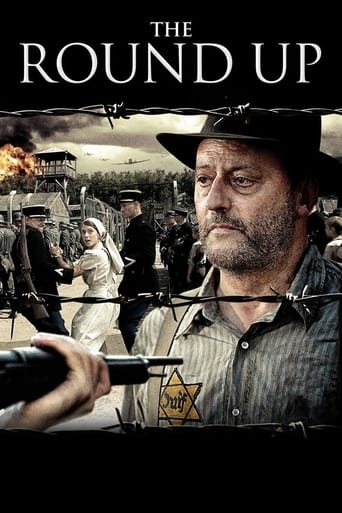

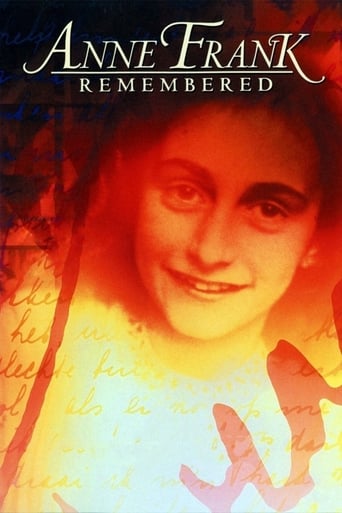


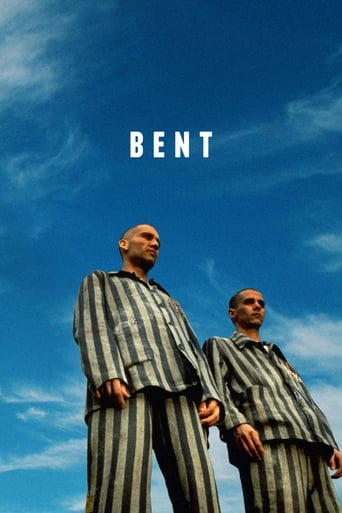



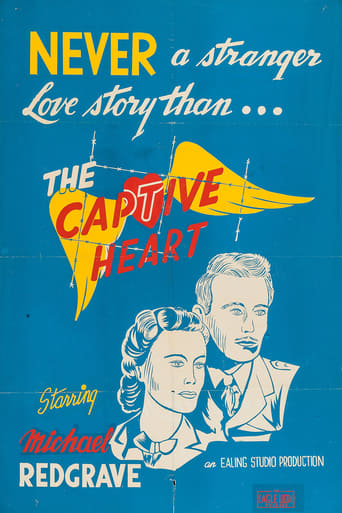
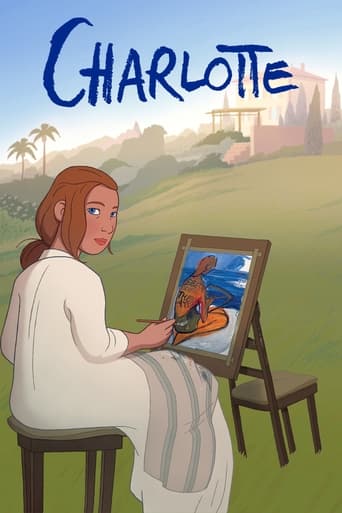

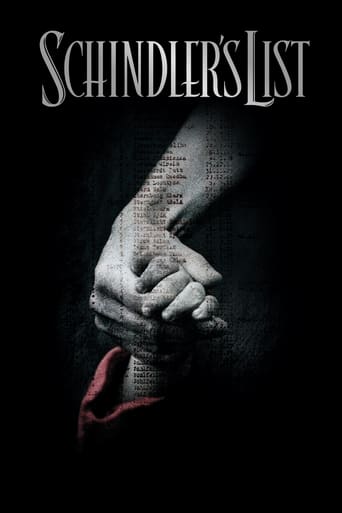





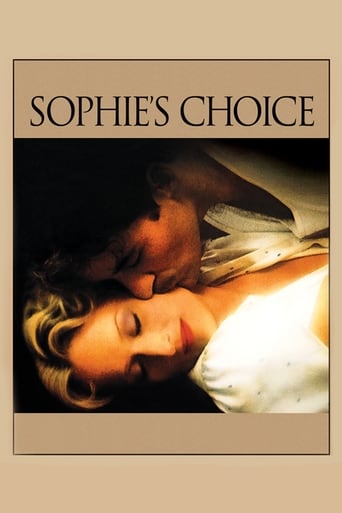













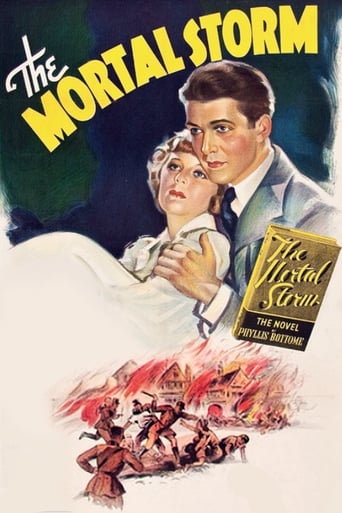

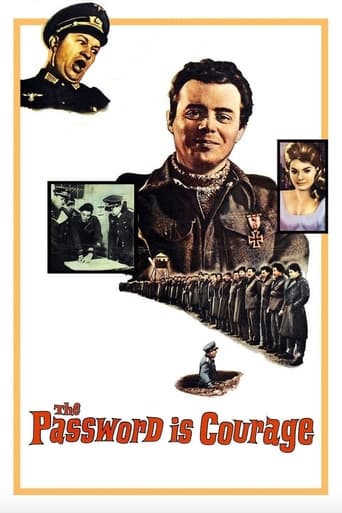

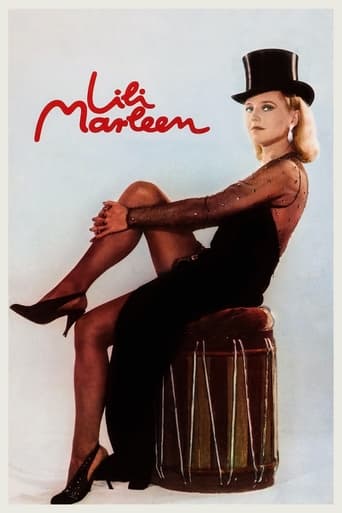






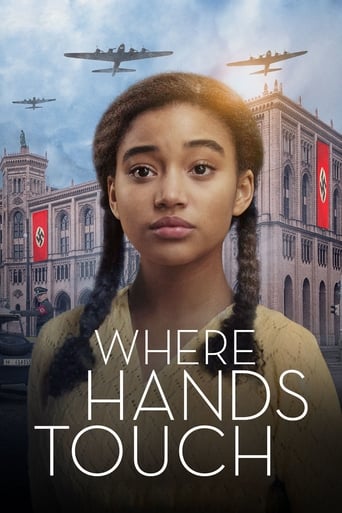



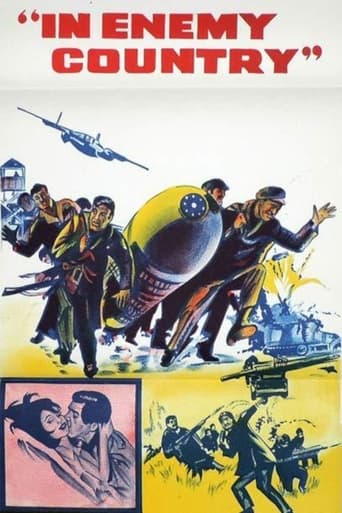

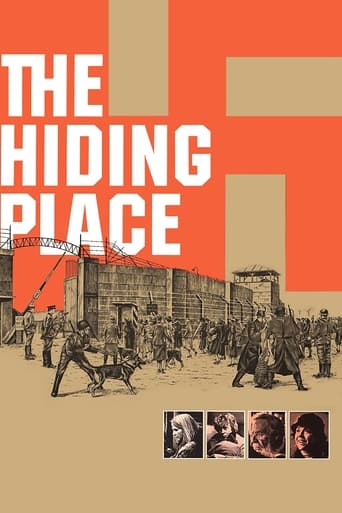

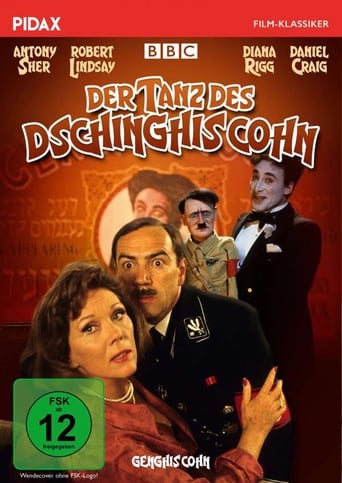

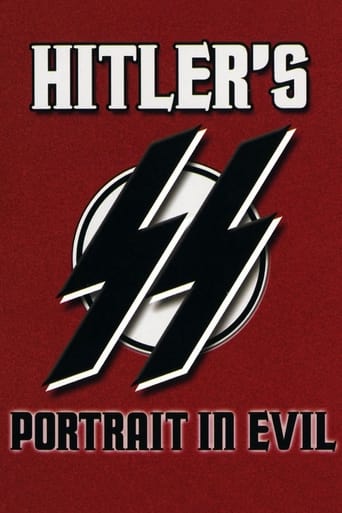






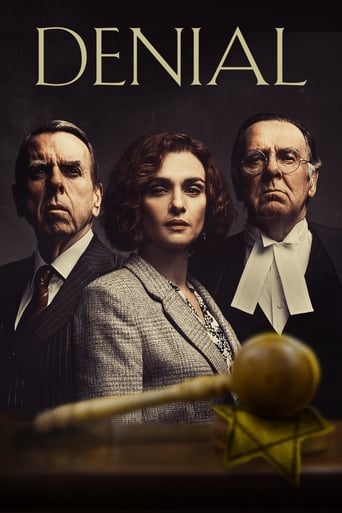







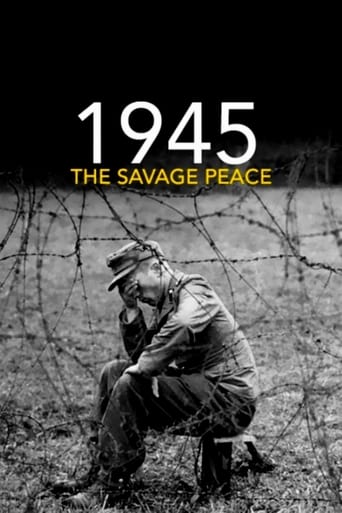


















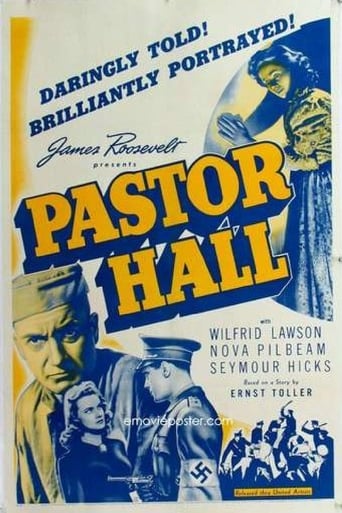


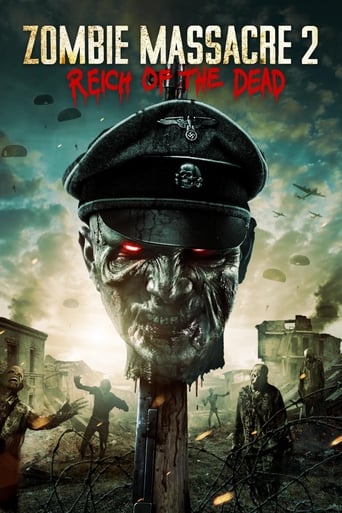
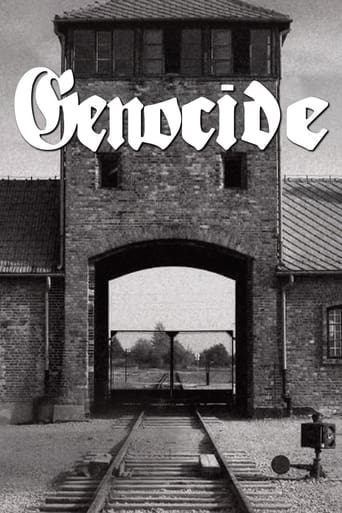
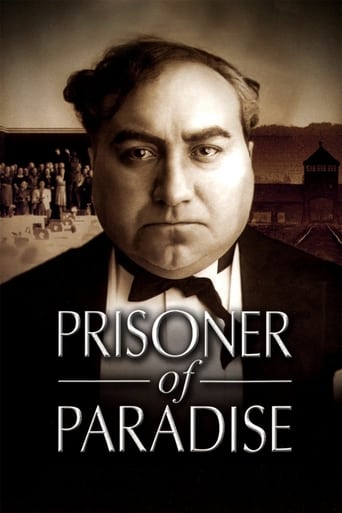
Zone Troopers
American soldiers, led by The Sarge, are stuck behind Nazi enemy lines. As they make their way across the Italian countryside, they come across an alien spaceship that has crash-landed in the woods. The alien pilot is dead, but one of the ship's passengers is on the loose. As the GIs hunt down the alien by splitting into smaller groups, they're not only tracked by the Nazis, but also a whole host of other aliens come to save their stranded party.